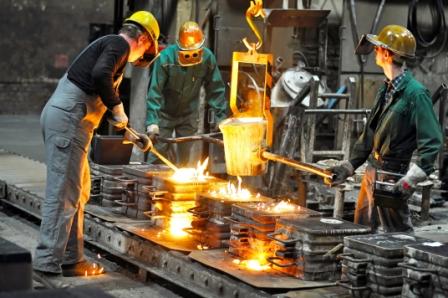Mounting concerns over slowing demand from the top commodity consumer China, recession worries in top economies, and a strong US dollar weighed down base metals. Prices decreased heavily from the first quarter of the year when commodity prices rallied to multi-year highs immediately after Russian invasion of Ukraine.
China’s demand for industrial metals has dramatically contracted under the weight of its zero-tolerance approach to Covid–19. As lockdowns are persistent, domestic commodity demand has collapsed causing a correction in global base metals prices.
The recent real estate crisis in the country also added pressure on the demand for base metals. China’s reality sector is one of the biggest real estate markets in the world. But the latest data indicates that their realty sector is facing a most difficult economic crisis, poised for a crash down. Data shows China’s home sales numbers have dropped by 60 percent and the existing weakness is said to be the worst in its history.
However, China’s latest pledge on spending billions on infrastructure did little help to support the prices. The government has initiated policy easing with large public spending, tax rebates, policy cuts, and a more dovish stance on the property sector.
Recently, the China State Council has announced additional stimulus measures to boost infrastructure spending and investments by banks. This was on top of the 300 billion yuan announced at the end of June. The state-owned power generation companies and local governments were also allowed to sell bonds with a view to stabilise the infrastructure sector. However, traders are doubtful about the effectiveness of the policy stimulus as mobility restrictions persist in the country.
High global interest rates too are weighing down the base metals outlook. Due to surging inflation, central banks across the world were prompted to hike interest rates. A high rate of interest would control the purchasing power of customers, which leads to low demand.
The US dollar has an important role in determining global commodity prices as it is the benchmark pricing mechanism for most commodities. The recent rate hikes take the US dollar to fresh 20-year highs.
Since commodity prices are inversely correlated with the dollar, when the dollar appreciates, the price of commodities measured in other currencies rises. This causes an increase in raw materials that eventually tends to a decline in demand.
Since China accounts for a big chunk of global growth, forecasts of a shortfall in China’s growth continue to weigh the base metals prices. A slow-growing China is not going to increase the commodity demand. As per the World Bank projection, China’s GDP growth will slow sharply to 4.3 percent in 2022 due to the economic damage caused by the outbreak of the pandemic.
However, the bank predicts aggressive policy stimulus measures to mitigate the economic meltdown may help to rebound China’s economy by 2023. If the pandemic is under control and domestic restrictions are fully lifted, the growth will be much higher due to stimulus measures.
Low inventory levels across major warehouses and production disruption due to high electricity prices may offer support to prices in the short run. Meanwhile, major rallies are highly unlikely due to worries over the recession in key economies.
First published in The Economic Times









